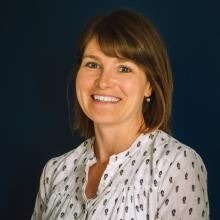Improved access to primary maternity services in Central Otago and the Upper Clutha is a positive step but does not go far enough, an Alexandra midwife says.
The Southern District Health Board (SDHB) agreed on Wednesday to establish a new primary birthing unit in Wanaka, pending Ministry of Health approval for capital investment for the build.
The decision followed extensive engagement with lead maternity carer (LMC) midwives, healthcare workers, iwi, and community members, and is a further step towards implementing the integrated primary maternity system of care launched in 2018.
In supporting the establishment of the unit, the board agreed to a two-unit solution for the Central Otago and Wanaka area, with a second unit to be located at Dunstan Hospital in Clyde. It will replace Charlotte Jean Maternity Hospital in Alexandra and they will complement the existing primary birthing unit at Lakes District Hospital in Queenstown.
SDHB board chairman Pete Hodgson said approving the Wanaka facility was a recognition of the town’s growing population, long distances from other centres, and the willingness of LMCs in the area to explore new approaches to working to create a sustainable service for the community.
The SDHB covers the largest area of all DHBs, challenging geography and weather and a relatively small population, Mr Hodgson said.

"We know for a fact they have only focused on the provision of primary maternity care and not secondary care, ignoring our population numbers and with that feedback received from community and stakeholders related to the need of secondary services."
There were populations in other parts of the country smaller than Central Otago and Upper Clutha which were provided by the DHB with better equitable secondary care.
"Not only is our population larger, but also our distance to hospital," Mrs Aarden said.
"Basically, what it comes down to, is the fact that there is no improvement in level of service during the intrapartum time and equitable access to secondary services remains problematic for our communities — whether it is planned or in emergency, as you can’t change the geography or the weather."
Access to primary services would be improved region-wide, which was a positive development, as the current single facility, Charlotte Jean, faced a population that had outgrown its service capacity she said.
"However, in healthcare priority should be given to the ones that are most vulnerable and at risk and where the demand is the highest."
Primary units in rural or remote settings did not answer those needs, Mrs Aarden said.
"For me as a primary midwife, the risk of finding myself, as well as the woman I’m looking after, isolated at a primary unit with an obstetric emergency three-four hours’ away from secondary obstetric support, is very high."











